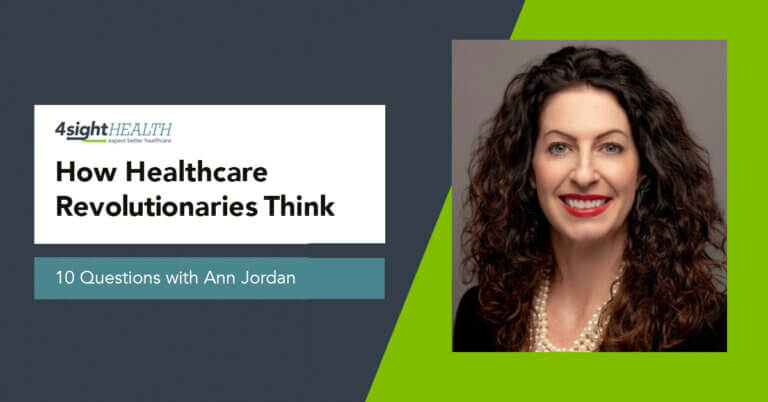January 3, 2023

Burda on Healthcare: If Health Is Wealth, We’re Flat Broke
After a more than three-month wait, I did keep my Dec. 5 appointment with an allergist and, guess what, I have allergies. A blood test showed that I’m allergic to trees, grass and weeds. I’m not allergic to dogs, cats or dust mites. No offense to my dog, but I wish it was the other way around. So, because I spend a lot of time outside doing things, I’m on a sixth prescription drug: a nasal spray to help control my reaction to all the things I’m breathing in and touching outdoors.
What struck me when I was circling the parking lot looking for a space, in the waiting room waiting for the allergist and in the waiting area outside the outpatient lab to get my blood drawn was this: the place was packed. I know it’s cold and flu season. I know sick people tend to congregate in hospital outpatient pavilions. But I mean packed. No parking spots. No open seats. People standing in the halls.
That got me thinking about population health and how sick we are as a people. When healthcare gurus say we need to change from a sick-care system to a well-care system, it’s more than just a clever turn of phrase. It’s a socioeconomic imperative.
How sick are we? Well, at the risk of starting the year on a down note, here are some recent reports and studies that answer that question.
America’s Health Rankings: Annual Report 2022
This annual health status report from the United Health Foundation and the American Public Health Association is based on 83 measures of health in five categories (health outcomes, social and economic factors, physical environment, behaviors and clinical care) from the most recent data from 29 different sources. Here are some of the lowlights from the 44-page report:
- The rate of drug deaths rose 30 percent in 2020.
- The premature death rate rose 18 percent in 2020.
- The percentage of obese adults rose 6 percent in 2021.
- The percentage of adults with multiple chronic conditions rose 5 percent in 2021.
Alcohol-Induced Deaths in Adults Aged 65 and Over: United States, 2019 and 2020
 Although this report from the National Center for Health Statistics, which is part of the CDC, is short at four pages, it contains some very sobering news. More seniors are dying from alcohol-related causes. Ever been in a Binney’s on Sunday after church and before a noon football game? Try to find a cart. Here are the numbers:
Although this report from the National Center for Health Statistics, which is part of the CDC, is short at four pages, it contains some very sobering news. More seniors are dying from alcohol-related causes. Ever been in a Binney’s on Sunday after church and before a noon football game? Try to find a cart. Here are the numbers:
- The alcohol-related death rate of adults age 65 or older rose 18.2 percent in 2020 to 20.1 per 100,000 people from 17.0 per 100,000 people in 2019.
- Gender- and age-wise, the alcohol-related death rate in 2020 was the highest for men age 65 to 74 at 43.4 per 100,000.
- Ethnicity-wise, the alcohol-related death rate in 2020 was the highest for American Indian and Alaskan Native people at 55.1 per 100,000.
COVID-19: U.S. Impact on Antimicrobial Infections
From sobering to scary is this 44-page special report from the CDC on how the pandemic affected the rate of infections that are resistant to antibiotics. This is particularly noteworthy given this season’s high rate of respiratory infections in children and the widespread shortages of antibiotics to treat them. The report identified 18 different antimicrobial-resistant bacteria and fungi and stratified them into three levels—urgent (five), serious (11) and concerning (two)—based on their threat to our health. Of the 18, the rates for:
- Nine are increasing.
- Five are stable.
- Four are decreasing.
“During the COVID-19 pandemic, many bacterial and fungal infections went potentially undiagnosed and untreated,” the CDC said. “The COVID-19 pandemic changed healthcare-seeking behavior and access to healthcare when outpatient clinics closed or limited appointments, resulting in fewer in-person visits.”
Provisional Numbers and Rates of Suicide by Month and Demographic Characteristics: U.S. 2021
The National Center for Health Statistics at the CDC also released this seven-page report that noted an uptick in suicides in 2021 after dropping in both 2019 and 2020. The NCHS didn’t offer any explanation for the change in the trend’s direction. But you don’t need to be a health services researcher to know how much our collective mental health has been battered by all kinds of things from the pandemic to politics. Some data points from the report:
- The raw number of suicides in the U.S. rose 3.6 percent last year to 47,646 from 45,979 in 2020.
- The suicide rate rose to 14.0 per 100,000 people last year from 13.5 percent in 2020 — a 3.7 percent increase.
- The suicide rate was significantly higher for men last year than women — 22.7 per 100,000 compared with 5.6 per 100,000, respectively.
The U.S. Maternal Mortality Crisis Continues to Worsen: An International Comparison
 Perhaps most embarrassing of all is our healthcare system’s inability to take care of moms and babies. A new report from The Commonwealth Fund reminded me again of this population health black eye. The report compared the material mortality rate in the U.S. with that of 12 other high-income countries. We topped the list at 23.8 maternal deaths for every 100,000 live births in 2020. At the bottom of the list was the Netherlands at 1.2 maternal deaths for every 100,000 live births. Want more?
Perhaps most embarrassing of all is our healthcare system’s inability to take care of moms and babies. A new report from The Commonwealth Fund reminded me again of this population health black eye. The report compared the material mortality rate in the U.S. with that of 12 other high-income countries. We topped the list at 23.8 maternal deaths for every 100,000 live births in 2020. At the bottom of the list was the Netherlands at 1.2 maternal deaths for every 100,000 live births. Want more?
- The maternal death rate for U.S. non-Hispanic whites was 19.1 per 100,000 live births.
- The maternal death rate for U.S. blacks was 55.3 per 100,000 births, or nearly three times higher.
Provisional Life Expectancy Estimates for 2021
We’ll end this curated list of grim population health reports with the granddaddy of them all—the annual report on life expectancy from the CDC. The news out of the world’s preeminent public health agency wasn’t good: a drop in life expectancy in the U.S. to 76.1 years in 2021 from 77.0 years in 2020 and 78.8 years in 2019. That’s a loss of nearly three years in a short amount of time. Pushing the life expectancy rate down last year, in ranked order of impact per the CDC, were deaths from:
- COVID-19
- Unintentional injuries
- Heart disease
- Chronic liver disease and cirrhosis
- Suicide
- And something called “residual,” which basically is what everyone else died from.
Based on the CDC’s tables in the report, at age 62, I’ve got 18 maybe 19 years left.
Feel better? I don’t.
I realize that many of the population health problems that we have are self-inflicted. We have millions of people in this country who won’t get a free, safe vaccine that prevents the spread of a potentially deadly virus because they’re part of a political cult that believes getting the vaccine infringes on their freedom.
I can’t do anything about stupid people other than stay vaccinated and wear a mask in crowded indoor spaces that I can’t avoid. But I would feel better if we started to pay providers, insurers, device makers, drug companies and others to keep us healthy rather than treat us when we’re sick.
That certainly would make it a lot easier to find a parking spot in the hospital outpatient lot.
Thanks for reading. Let’s hope for some good population health news the rest of this new year.





